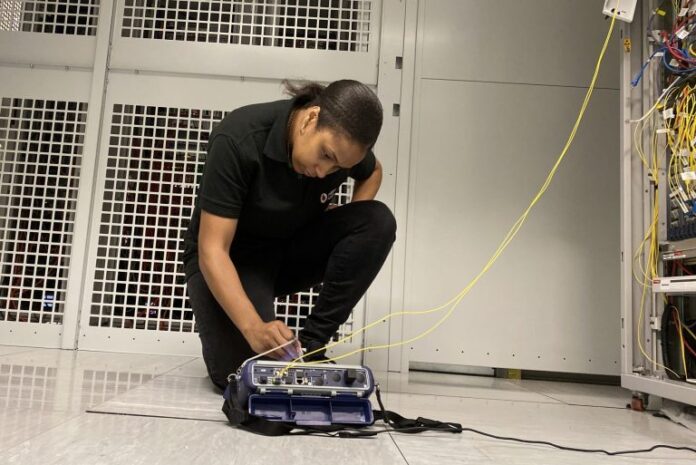
Proves that transmission and reception of data on wireless terahertz (THz) frequency is viable for potential 6G standard.
Korea’s LG Electronics and Germany’s research lab Fraunhofer-Gesellschaft have successfully proved one of the central concepts of 6G networks. Though 6G systems do not technically exist without a standard, their potential came one step closer to reality.
Terahertz frequencies, electromagnetic waves with frequencies between 100 GHz and 10 THz, or wavelengths between 3 mm and 30 μm, were used in a networking experiment and managed to transmit data over 100 meters in an outdoor setting.
It was the first time this has been done but hopefully not the last if a 6G standard is upheld.
The demonstration took place on 13 August with the test data traveling between the Fraunhofer Heinrich Hertz Institute (HHI) and the Berlin Institute of Technology. LG attributes the success of the demo to its collaboration with Germany research lab Fraunhofer-Gesellschaft.
Koreans investing heavily in 6G futures
One of the biggest challenges for wireless 6G will be the need for power amplification. Terahertz frequencies have short ranges and suffer from power loss during transmission and reception between antennas. This calls for the generation of a stable signal across ultra-wideband frequencies. The power amplifier was developed by Korean network equipment maker LG, with independent texting conducted by Fraunhofer HHI and Fraunhofer Institute for Applied Solid State Physics (IAF).
The power amplifier can generate a stable signal output of up to 15 dBm in the frequency range between 155 to 175 GHz. To this end LG claimed it also demonstrated adaptive beamforming technology successfully. The beamformer alters the signal’s direction in accordance with changes to the channel and receiver position. This employs a technique involving high-gain antenna switching, which combines output signals of multiple power amplifiers and transmits them to specific antennas.
“This test means we are ever closer to the successful application of terahertz radio communication spectrum in the upcoming 6G era,” said Dr. I.P. Park, president and CTO of LG Electronics.
In 2019, LG established the LG-KAIST 6G Research Center in partnership with the Korea Advanced Institute of Science and Technology (KAIST). This year, LG and KAIST partnered with US test and measurement firm Keysight Technologies to research future 6G technologies.
6G and the ambient internet of everything
All LG’s partners have agreed to develop technologies related to terahertz frequencies, the key frequency band for 6G communications which has not been standardised. The partners aim to complete 6G research by 2024. LG predicted that 6G’s faster data speed, lower latency and higher reliability will create the Ambient Internet of Everything (AIoE), which provides enhanced connected experience to users.
Last year, the government of South Korea said it aims to launch a pilot project for yet to be standardised 6G mobile services in 2026. The Korean government expects 6G services to be commercially available in Korea between 2028 and 2030. The Korean government will invest $179.2 million to secure basic 6G technology by 2026.


